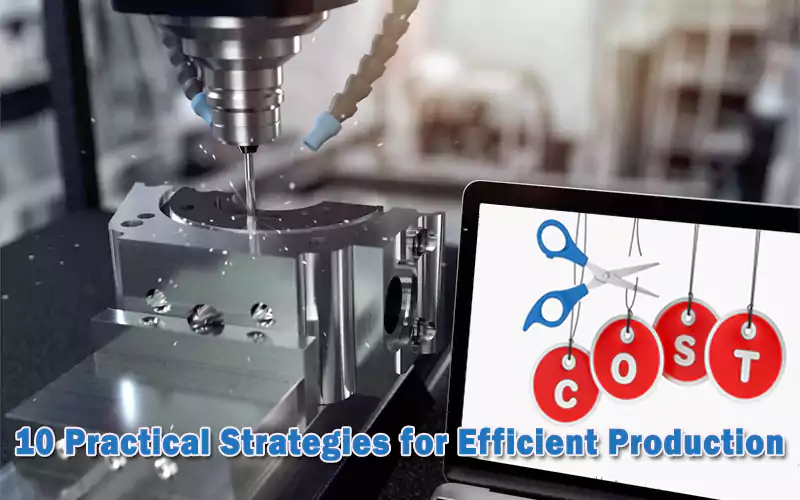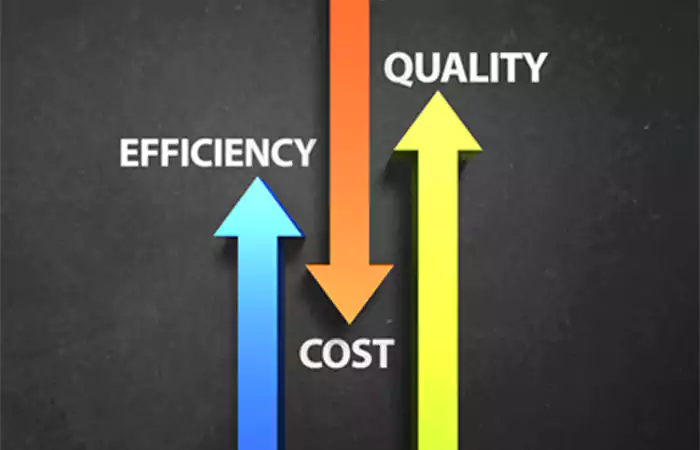How to reduce CNC machining costs: 10 Practical Strategies for Efficient Production
- March 5, 2025
- Tony
- Last updated on October 23, 2025 by Lucy

In modern manufacturing, CNC machining costs are crucial to the profitability of any organization. As competition increases, effectively reducing these costs while maintaining quality has become a central goal for many manufacturers.
1. Overview of CNC machining costs
What are CNC machining costs?
CNC machining costs are all the costs and expenses involved in machining using numerically controlled (CNC) machines.

Why Reducing CNC Machining Costs Matters?
In today’s competitive manufacturing landscape, controlling CNC machining costs isn’t just about saving money—it’s about staying profitable and competitive. Whether you’re a procurement manager or a plant engineer, understanding where costs come from and how to optimize them can make or break your bottom line.
CNC machining costs include:
- Machine acquisition and operation
- Labor and materials
- Tooling, fixturing, and programming
- Overhead and surface treatments
By tackling these areas strategically, you can improve profitability, pricing flexibility, and resource efficiency.
2. 10 Practical Strategies to Reduce CNC Machining Costs
1. Optimize material selection
Selecting the right CNC materials and maximizing material utilization are key to reducing waste, cutting raw material costs, and lowering overall machining expenses.
2. Improvement of processing methods
Streamlining CNC machining methods and cutting out redundant steps boosts efficiency. Efficient processes reduce cutting time, eliminate unnecessary steps, and lower unit costs, leading to higher productivity.
🛠️ Case Study: Optimizing a Bracket Mount
We recently worked with an industrial equipment manufacturer who needed to reduce the cost of a aluminum 6061 bracket mount. Here’s how we did it:
- Part: Bracket Mount (Aluminum 6061)
- Original Process: 3-axis milling, 4 setups, 47 minutes per part
- Optimized Process: 5-axis milling, 1 setup, 22 minutes per part
- Material Usage: Reduced from 2.1 kg to 1.4 kg per unit
- Tool Changes: Dropped from 8 to 3
- Result: 38% cost reduction per part, with no change in tolerances or finish quality.
This was achieved by redesigning the part for 5-axis efficiency and nesting two parts per raw stock. Simple changes, big impact.
3. Optimization of CNC programming
Smart programming like toolpath optimization and efficient G-code reduces idle time and tool wear.
4. Select cost-effective tools

Selecting the right CNC tools is crucial for controlling tool-related costs. Durable tools last longer, reducing the frequency of replacements and controlling tool costs while maintaining machining quality.
5. Optimize nesting and materials
Optimizing CNC layout minimizes material waste. Smart nesting strategies and efficient material use reduce scrap, while recycling further cuts costs, contributing to overall savings.
6. Intelligent automated manufacturing
Boosting CNC automation improves productivity and reduces labor costs. Upgrading to intelligent machining systems streamlines processes, reduces manual intervention, and optimizes resource use, leading to lower operational costs and higher output.
7. Regular equipment maintenance
Regular CNC equipment maintenance prevents costly repairs and reduces downtime. Proactive maintenance minimizes unexpected failures, lowers repair costs, and enhances production efficiency.
8. Reduce CNC unit processing cost
Optimizing CNC production lot sizes reduces unit costs through economies of scale. Larger batches increase productivity and reduce idle machine time, helping to control overall costs.
9. Choose the most economical CNC solution
When deciding between outsourcing CNC machining or in-house production, compare the costs of both. Cost-effective supply chain management helps determine the best option—outsourcing is ideal for low-volume needs, while in-house production offers better quality control.
10. Reduce Unnecessary CNC machining Costs
Surface treatments like polishing and plating impact both cost and quality. Choosing cost-effective surface treatment methods and avoiding over-processing reduces plating costs and other finishing expenses, optimizing overall production costs.
3. Benefits of reducing CNC machining costs

- Increase profitability: By reducing machining costs, the profit of the enterprise is increased.
- Enhance competitiveness: enable enterprises to have stronger price competitiveness in the market.
- Optimize resource use: reducing material waste and unnecessary processes improves resource efficiency.
- Enhance production efficiency: Enhance overall production efficiency by improving CNC machining methods and equipment.
- Saving operating costs: Reducing labor and maintenance costs and reducing the overall operating expenses of the company.
- Enhance Sustainability: Support environmental protection and long-term development through lean manufacturing and intelligence enhancement.
4. Conclusion
Reducing CNC machining costs requires a comprehensive approach, from material selection to process improvement. Strategies like intelligent programming, efficient machining, and automation can cut costs in various ways. Regular maintenance, batch management, and outsourcing also help reduce expenses. These methods maintain product quality while maximizing savings, improving profitability, and strengthening market position.
Of course, outsourcing to a professional CNC machining service provider is often the best choice for manufacturers to save costs and boost efficiency.
